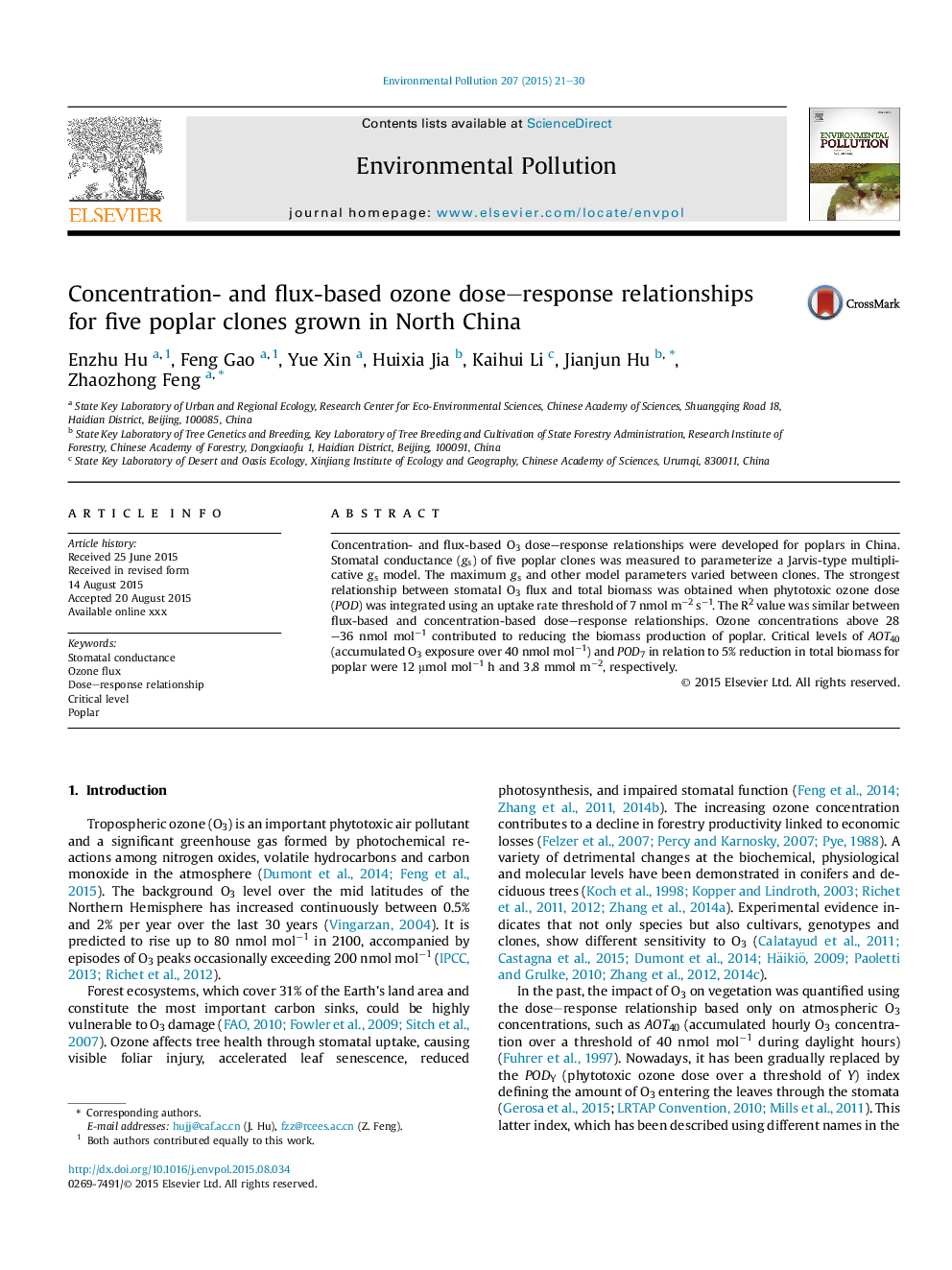| Article ID | Journal | Published Year | Pages | File Type |
|---|---|---|---|---|
| 6316124 | Environmental Pollution | 2015 | 10 Pages |
Abstract
Concentration- and flux-based O3 dose-response relationships were developed for poplars in China. Stomatal conductance (gs) of five poplar clones was measured to parameterize a Jarvis-type multiplicative gs model. The maximum gs and other model parameters varied between clones. The strongest relationship between stomatal O3 flux and total biomass was obtained when phytotoxic ozone dose (POD) was integrated using an uptake rate threshold of 7 nmol mâ2 sâ1. The R2 value was similar between flux-based and concentration-based dose-response relationships. Ozone concentrations above 28-36 nmol molâ1 contributed to reducing the biomass production of poplar. Critical levels of AOT40 (accumulated O3 exposure over 40 nmol molâ1) and POD7 in relation to 5% reduction in total biomass for poplar were 12 μmol molâ1 h and 3.8 mmol mâ2, respectively.
Related Topics
Life Sciences
Environmental Science
Environmental Chemistry
Authors
Enzhu Hu, Feng Gao, Yue Xin, Huixia Jia, Kaihui Li, Jianjun Hu, Zhaozhong Feng,
